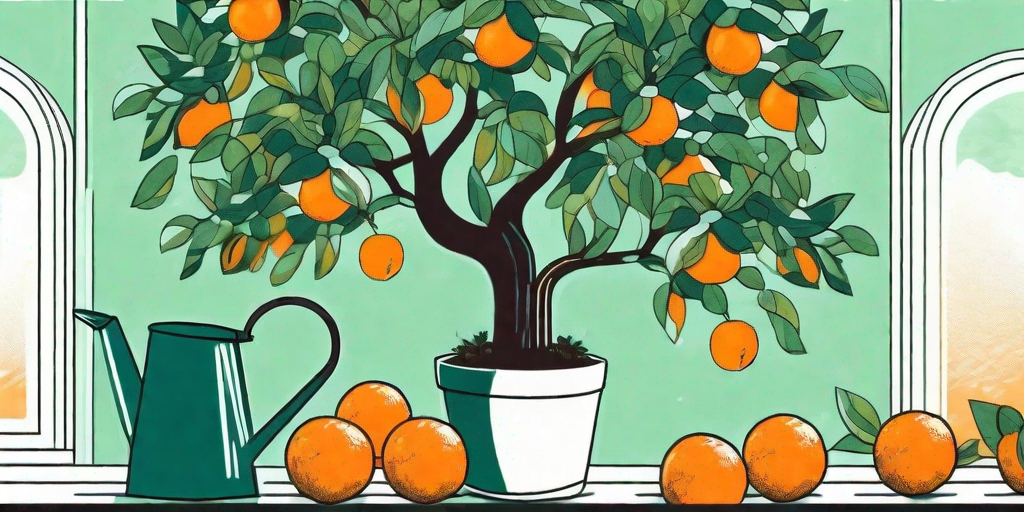
Ah, the navel orange tree, nature's very own solar-powered fruit factory. If you've ever fantasized about plucking a sun-kissed orb of citrusy goodness right from your backyard, you're in the right place. We're about to embark on a journey of horticultural heroism, where you'll learn the juicy secrets of nurturing your very own navel orange tree. So, grab your gardening gloves, and let's get started!
The Navel Orange Tree: A Brief History
Before we dive into the how-to, let's take a moment to appreciate the rich history of the navel orange tree. Originating from a single tree in Brazil in the 1800s, the navel orange has since spread its roots across the globe, thanks to its seedless nature and sweet, juicy flesh. Today, it's one of the most popular citrus fruits, especially in the United States.
But why 'navel', you ask? Well, the name comes from the belly-button-like formation found at the apex of the fruit. It's essentially a secondary fruit embedded in the primary one. So, when you're nurturing a navel orange tree, you're essentially growing a fruit within a fruit. How's that for a fun fact?
Choosing the Right Spot
Like a sunbathing beauty, navel orange trees love the sun. They need at least six hours of sunlight each day. So, choose a spot in your garden that gets plenty of sunshine. If you're planning to grow your tree in a container, make sure it's placed near a sunny window.
Another thing to consider is the soil. Navel orange trees prefer well-drained soil. So, if your garden is more clay than sand, you might want to consider adding some organic matter to improve drainage.
Testing Your Soil
Not sure about your soil type? No worries! You can easily test it using the jar test. Simply fill a jar with soil, add water, shake it up, and let it settle. The different layers will give you an idea of your soil composition.
If you find that your soil is too heavy on clay, adding compost or other organic matter can help improve its texture and drainage. Remember, a happy tree is one that can breathe easily through its roots.
Planting Your Tree
Now that you've found the perfect spot, it's time to plant your tree. Dig a hole twice as wide and just as deep as the root ball of your tree. Place the tree in the hole, making sure the top of the root ball is level with the soil surface. Then, backfill the hole with soil, firming it gently around the base of the tree.
Once your tree is planted, give it a good watering. This will help settle the soil and ensure your tree gets off to a great start. Remember, the first few weeks are crucial for your tree's survival, so make sure it gets plenty of water and sunshine.
Caring for Your Tree
Now that your tree is planted, it's time to shift gears from planting to caring. This involves regular watering, feeding, and pruning.
Watering should be done deeply and infrequently. This encourages the roots to grow deeper into the soil, making your tree more drought-tolerant. As for feeding, a slow-release citrus fertilizer applied in spring and summer should do the trick.
Pruning is also important to maintain the shape of your tree and promote better fruit production. The best time to prune is in spring, before the new growth starts.
Dealing with Pests
Like any plant, navel orange trees can be susceptible to pests. Common culprits include aphids, scale, and citrus leafminer. Regular inspection of your tree can help catch these pests early before they cause too much damage.
If you do find pests, don't panic! Most can be dealt with using organic methods such as neem oil or insecticidal soap. Remember, a healthy tree is more resistant to pests, so keep up with your regular care routine.
Harvesting Your Oranges
The moment you've been waiting for: harvest time! Navel oranges are usually ready to harvest in winter. The best way to tell if your oranges are ripe is by taste. Pick one, give it a try, and if it's sweet and juicy, it's time to harvest.
When harvesting, use a pair of sharp secateurs to cut the fruit from the tree. This will help prevent damage to the tree and the fruit. And remember, freshly picked oranges can last for several weeks if stored in a cool, dry place.
Frequently Asked Questions
How long does it take for a navel orange tree to bear fruit?
Patience is key when growing navel orange trees. From the time of planting, it can take anywhere from three to six years for the tree to start bearing fruit. But trust us, the wait is worth it!
Can I grow a navel orange tree from a seed?
While it's possible to grow a navel orange tree from a seed, it's not recommended. Navel oranges are seedless, which means any seeds you do find are likely from cross-pollination and may not produce true navel oranges. For best results, buy a grafted tree from a nursery.
Can I grow a navel orange tree indoors?
Absolutely! Navel orange trees can be grown indoors in containers. Just make sure they get plenty of sunlight and are planted in well-draining soil.
Conclusion
And there you have it, the juicy secrets of nurturing a navel orange tree. With a bit of patience and care, you can enjoy the fruits of your labor (literally!) in just a few years. So, what are you waiting for? Get out there and start growing your own sunshine!











